Uncover the Secrets of Goguryeo’s Historic Capitals and Royal Tombs
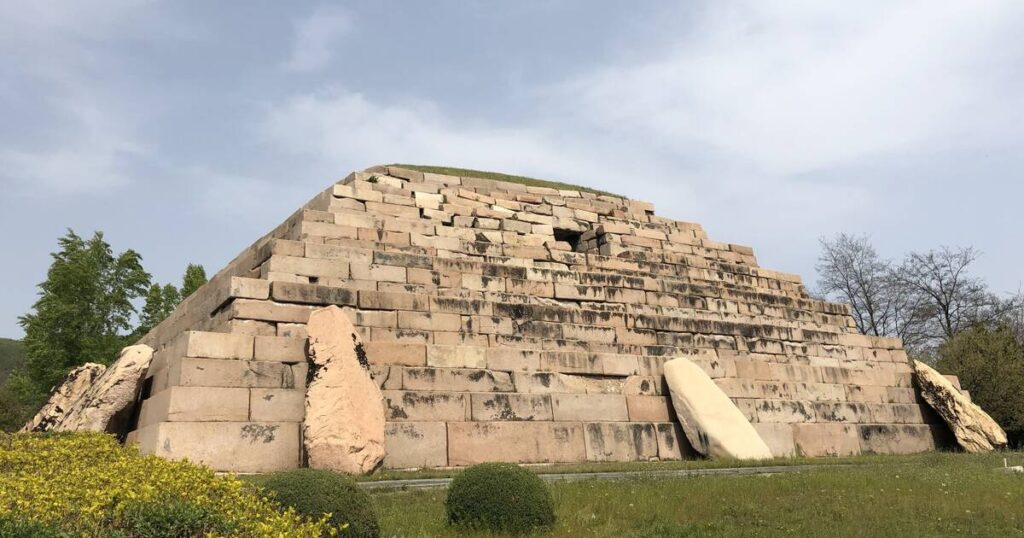
An Essential Guide to Visiting Goguryeo_Capital_Cities_And_Tombs
Nestled in the stunning landscapes of Northeast China, the remnants of the ancient Goguryeo Kingdom beckon travelers eager to explore a rich tapestry of history, culture, and architectural prowess. This once-mighty realm, which thrived from 37 BCE until 668 CE, left behind a legacy that includes three remarkable capital cities and a collection of 40 awe-inspiring tombs. Each site offers a window into the lives of emperors and nobles who once ruled this vast territory that spanned parts of northern China and the northern half of the Korean Peninsula.
As you wander through the archaeological remains of Wunu Mountain City, Guonei City, and Wandu Mountain City, you will encounter an intricate blend of natural beauty and human ingenuity. The cities are not merely historical ruins; they are a testament to the sophisticated urban planning and architectural techniques of their time. The elaborate tombs, adorned with exquisite wall paintings depicting daily life, nature, and mythical beings, serve as an artistic reflection of Goguryeo’s vibrant culture.
Whether you are an aficionado of ancient civilizations, an adventure seeker, or a cultural enthusiast, visiting the Goguryeo Capital Cities and Tombs will transport you back in time. Prepare to be captivated by the stories etched in stone, the breathtaking landscapes, and the echoes of a civilization that once shaped the region’s history. Join us as we delve into the essential experiences, practical tips, and must-see highlights of this UNESCO World Heritage site, ensuring your journey through the heart of Goguryeo is both memorable and transformative.
In This Guide
- An Essential Guide to Visiting Goguryeo_Capital_Cities_And_Tombs
- The Rich History and Legends of Goguryeo_Capital_Cities_And_Tombs
- Main Highlights: What You Absolutely Can’t Miss
- Planning Your Visit: A Practical Guide
- Tickets: Prices, Booking, and Tips
- How to Get There: A Complete Transportation Guide
- Local Cuisine and Accommodation Nearby
- Frequently Asked Questions
- Final Thoughts on Your Trip
The Rich History and Legends of Goguryeo_Capital_Cities_And_Tombs
Nestled in the heart of northeast China, the remnants of the ancient Goguryeo Kingdom whisper tales of grandeur, power, and a vibrant culture that once thrived from 37 BCE to 668 CE. This kingdom, known for its formidable military and rich cultural heritage, left an indelible mark on the landscape, particularly through its capital cities and elaborate tombs, which now stand as UNESCO World Heritage Sites.
The Goguryeo kingdom was one of the three ancient kingdoms of Korea, alongside Baekje and Silla. At its zenith, it extended over parts of northern China and the northern half of the Korean Peninsula, becoming a significant regional power. The three capital cities of Goguryeo—Wunu Mountain City, Guonei City, and Wandu Mountain City—each played an essential role in the kingdom’s administration and culture.
Wunu Mountain City
Wunu Mountain City, established in 37 BCE, was the first capital of the Goguryeo regime. Its strategic location, fortified by natural rock formations, was complemented by human-made defensive walls featuring three imposing gates. Within its walls, the city was a bustling hub of activity, housing a palace, military camps, and various residential and economic structures. Though only partially excavated, the site’s remnants hint at a complex urban layout that harmonized with the surrounding mountainous terrain.
Guonei City
As the kingdom evolved, Guonei City emerged as a crucial supporting capital after the main capital shifted to Pyongyang in 427 CE. Located within the modern city of Ji’an, this city boasted a robust stone wall and a well-planned separation of residential and palace areas, marking its importance as a political and cultural center. Despite suffering destruction in 197 CE during conflicts with rival powers, Guonei City remains a testament to the architectural ingenuity of the Goguryeo people.
Wandu Mountain City
Wandu Mountain City, another significant capital, rose to prominence in 209 CE. This city is particularly notable for its impressive palace complex and the 37 tombs that dot its landscape. The layout of Wandu Mountain City was meticulously planned, with the palace at its core, showcasing the Goguryeo’s unique blend of urban design and natural beauty. The tombs here, especially the imperial ones, are remarkable for their architectural innovation—many feature intricately designed ceilings that support vast spaces without the need for columns.
The Tombs of Goguryeo
The tombs of the Goguryeo nobility and royalty provide profound insights into the cultural practices and beliefs of this ancient civilization. The burial sites, predominantly found in the Donggou Ancient Tombs Area of Wandu Mountain City, include 14 imperial tombs and 26 noble tombs. These tombs exhibit a stepped pyramid structure, often adorned with clay-tiled roofs and decorated with stunning wall paintings. The artwork depicts various aspects of daily life, nature, and mythological themes, revealing the rich tapestry of Goguryeo artistry and spirituality.
One particularly notable artifact is the stele of King Haotaiwang, dating back to 414 CE, which chronicles the founding of the Goguryeo kingdom. The inscriptions and artwork in these tombs not only express the creative genius of the Goguryeo people but also illustrate the cultural exchanges that occurred with neighboring civilizations, particularly the influences from Chinese culture.
Legacy and Significance
The capital cities and tombs of the Goguryeo Kingdom are not merely archaeological sites; they are vital chapters in the history of East Asia. Their layout and architectural styles influenced later urban planning, while the tomb paintings stand as a rare artistic expression from medieval Northeast Asia. These sites collectively narrate the legacy of a once-mighty kingdom, celebrating human creativity and the intricate relationship between culture and environment.
As you traverse the landscapes of Goguryeo, you will not only witness the remnants of stone and earth but also feel the echoes of a civilization that shaped the history of Korea and China. Each city and tomb tells a story of power, artistry, and the enduring spirit of its people, inviting travelers to step back in time and uncover the rich narratives woven into the fabric of this ancient kingdom.
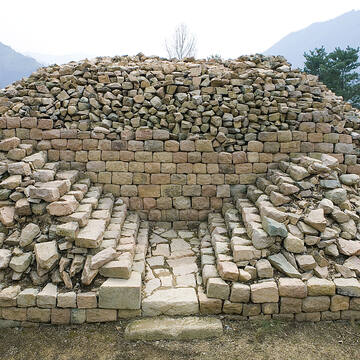
Goguryeo_Capital_Cities_And_Tombs.
Main Highlights: What You Absolutely Can’t Miss
Exploring the ancient realm of Goguryeo is like stepping into a living history book, where the echoes of a powerful kingdom resonate through its capital cities and tombs. Here are the must-see highlights that you absolutely cannot miss when visiting the Capital Cities and Tombs of the Ancient Goguryeo Kingdom.
Wandu Mountain City
A Royal Legacy Awaits
Wandu Mountain City, once a bustling capital of Goguryeo, is your gateway to understanding the grandeur of this ancient civilization. Here, you’ll find the remains of a vast palace complex and 37 impressive tombs, showcasing the ingenuity of Goguryeo architecture. The tombs are particularly striking, featuring elaborate ceilings designed to support the weight of earthen mounds above without the need for columns. Don’t miss the stunning views from the mountain itself, which highlight the strategic positioning of this city within the natural landscape.
Guonei City
The Supporting Capital
Nestled within the modern city of Ji’an, Guonei City served as a vital supporting capital after the primary seat of power moved to Pyongyang. This city is characterized by its well-preserved stone defensive walls and distinct palace and residential areas. As you wander through the remnants of Guonei, imagine its historical significance as an economic and cultural hub during the height of the Goguryeo Kingdom. The juxtaposition of ancient ruins against the backdrop of a modern city offers a unique glimpse into the past.
Wunu Mountain City
A Glimpse into the Unknown
Although only partially excavated, Wunu Mountain City offers a fascinating look at the early foundations of Goguryeo. Established as the kingdom’s first capital in 37 BCE, this site features protective walls and remnants of military installations. The ongoing archaeological work here means there are always new discoveries on the horizon, making it an exciting stop for history enthusiasts and those intrigued by the mysteries of ancient civilizations.
The Tombs of Goguryeo
An Artistic Journey Through Time
The tombs scattered across the Goguryeo landscape are not just burial sites; they are artistic masterpieces. The imperial tombs, with their stepped pyramid forms and clay-tiled roofs, reflect the sophisticated burial practices of the elite. Meanwhile, the noble tombs are adorned with vibrant wall paintings that depict scenes of daily life, nature, and mythical beings. These artworks are a testament to the cultural exchanges that shaped Goguryeo, providing insight into their beliefs and traditions.
The Stele of King Haotaiwang
A Historical Inscription
Among the treasures of the Goguryeo tombs, the stele of King Haotaiwang stands out. Dating back to 414 CE, this stone tablet narrates the founding story of the Goguryeo Kingdom and serves as an important historical document. Its inscriptions are a valuable resource for understanding the political and cultural landscape of the time, making it a must-see for anyone interested in the kingdom’s legacy.
Breathtaking Natural Surroundings
Nature Meets Heritage
The sites of the Goguryeo Capital Cities are not just about human achievement; they are also a perfect blend of nature and architecture. Surrounded by mountains, rivers, and forests, these ancient cities were designed to harmonize with their environments. Take time to appreciate the stunning natural scenery that complements the historical significance of these locations.
Conclusion
Visiting the Capital Cities and Tombs of the Ancient Goguryeo Kingdom offers a unique opportunity to connect with a remarkable chapter of history. Each site is rich with stories and cultural significance, making this journey not just a sightseeing trip, but a profound exploration of a civilization that shaped the region for centuries. Whether you are an avid historian or a curious traveler, the legacy of Goguryeo awaits to be discovered.
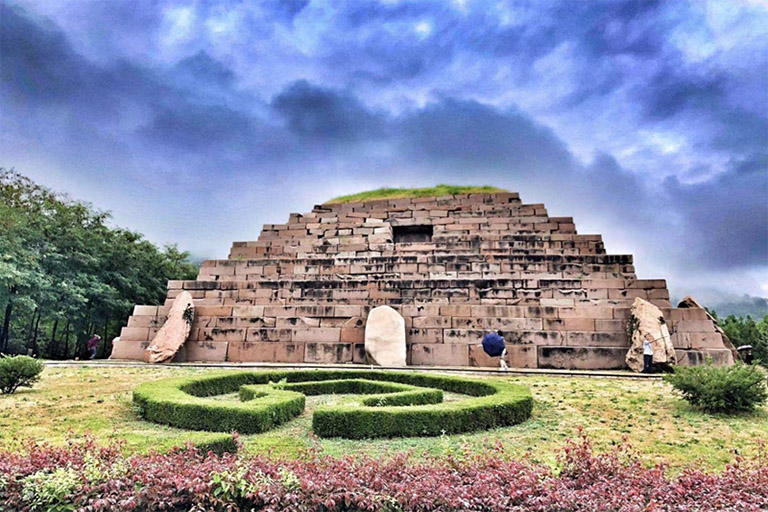
Goguryeo_Capital_Cities_And_Tombs.
Planning Your Visit: A Practical Guide
Visiting the ancient sites of the Goguryeo Kingdom is a journey through time, offering a unique glimpse into a civilization that thrived from 37 BCE to 668 CE. This practical guide will help you navigate the Capital Cities and Tombs of Goguryeo, ensuring you make the most of your visit to these UNESCO World Heritage sites.
Getting There
Location:
The Goguryeo Capital Cities and Tombs are primarily located in the northeastern region of China, specifically in Liaoning and Jilin Provinces. The main sites include Wunu Mountain City, Guonei City, and Wandu Mountain City.
Transportation:
– By Air: The nearest major airport is in Changchun or Shenyang. From there, you can take a train or hire a car to reach Ji’an, which is close to Guonei City.
– By Train: High-speed trains connect major cities in China, and from Ji’an, local transportation options like buses or taxis can take you to the sites.
– By Bus/Taxi: Once in Ji’an, taxis or local buses are available to reach the archaeological sites.
Best Time to Visit
The ideal time to explore the Goguryeo sites is during the spring (April to June) and autumn (September to November) months when the weather is mild and the natural scenery is at its finest. Avoid the winter months unless you are prepared for cold weather and possible snow.
What to See
-
Wunu Mountain City:
Although only partially excavated, this site is the oldest of the three cities and offers an insight into the early architectural styles of the Goguryeo Kingdom. Look for the remnants of the defensive walls and the layout of the palace. -
Guonei City:
Nestled within modern Ji’an, Guonei City served as a secondary capital. Its stone city walls are remarkably well-preserved, and you can explore the remnants of the palace and residential areas. Keep an eye out for information boards that detail the city’s history. -
Wandu Mountain City:
This site showcases a large palace and 37 tombs, with some of the tombs featuring elaborate ceilings designed without columns. Be sure to see the stunning views of the surrounding mountains, which highlight the unique integration of architecture and nature.
Tomb Exploration
The tombs of the Goguryeo kings and nobles are scattered throughout the Wandu Mountain area. Many tombs feature intricate wall paintings that depict scenes from daily life, mythology, and nature. Notable tombs include:
– Imperial Tombs: Recognizable by their stepped pyramid forms, these tombs are constructed with stone and feature clay-tiled roofs.
– Noble Tombs: These generally have stone chambers covered with earth mounds. The murals inside are breathtaking and offer a rare artistic view into the past.
Cultural Insights
To truly appreciate your visit, take time to learn about the history and culture of the Goguryeo Kingdom. The influence of Chinese culture is evident in the architecture and art, and understanding this context enhances your experience.
Practical Tips
- Guided Tours: Consider joining a guided tour for in-depth knowledge and insights into the history and significance of the sites.
- Wear Comfortable Shoes: The sites require a fair amount of walking, often on uneven terrain, so sturdy footwear is recommended.
- Stay Hydrated: Bring water, especially during warmer months, as some areas may have limited facilities.
- Respect the Sites: As these are sacred historical sites, please be respectful and follow any posted guidelines.
Accommodations and Dining
Where to Stay:
Ji’an offers various accommodation options ranging from budget hostels to mid-range hotels. Booking in advance is advisable, especially during peak tourist seasons.
Dining Options:
Local restaurants serve traditional Korean and Chinese cuisine. Don’t miss trying dishes like bibimbap or local noodle specialties.
Conclusion
Visiting the Capital Cities and Tombs of the Goguryeo Kingdom is not just a tour of ancient ruins; it’s an immersion into the rich tapestry of a historical civilization that has shaped the cultural landscape of Northeast Asia. Whether you’re a history buff, a cultural enthusiast, or simply looking to explore a unique part of the world, this site promises an unforgettable experience.
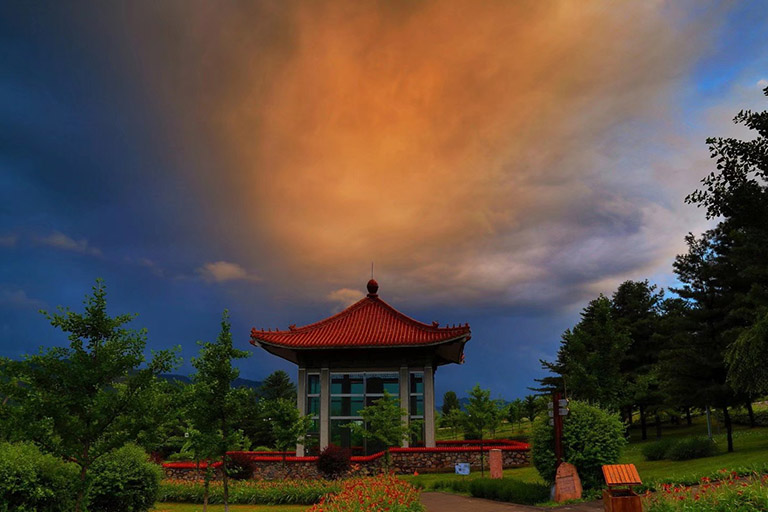
Goguryeo_Capital_Cities_And_Tombs.
Tickets: Prices, Booking, and Tips
When planning your visit to the Capital Cities and Tombs of the Ancient Goguryeo Kingdom, it’s essential to be informed about ticket prices, booking options, and some handy tips to enhance your experience. Here’s everything you need to know to make the most of your journey.
Ticket Information
-
General Admission: Tickets typically range from 30 to 50 CNY (approximately 5 to 8 USD) per person, depending on the specific site. There may be slight variations based on the season or special exhibitions.
-
Discounts: Children, students, and seniors often qualify for discounted tickets. Be sure to bring valid identification to avail of these offers.
-
Group Rates: If you’re traveling with a group of 10 or more, inquire about group rates when purchasing tickets. This can lead to significant savings.
Booking Options
-
On-site Purchase: Tickets can be bought directly at the entrance of each site. However, during peak tourist seasons, lines may be long, so arrive early.
-
Online Booking: Some sites offer online reservations through their official websites or popular travel platforms. This is a great way to secure your entry in advance, especially during busy periods.
-
Guided Tours: Consider booking a guided tour that includes entrance fees. Many local agencies offer packages that include transportation, a knowledgeable guide, and sometimes even meals.
Tips for Your Visit
-
Timing: Visit early in the day to avoid crowds and enjoy a more serene atmosphere. Late afternoons can also be a good time, especially for photography as the light softens.
-
Dress Comfortably: Wear comfortable shoes as you’ll likely be walking over uneven terrain and exploring multiple sites. The historical locations often involve some hiking, particularly in the mountainous regions.
-
Local Guides: Hiring a local guide can enrich your experience, providing insights into the rich history and significance of Goguryeo culture that you might miss on your own.
-
Respect the Sites: As these are significant cultural and historical sites, remember to follow any posted rules and regulations. Avoid touching artifacts or climbing on ruins to help preserve these treasures for future generations.
-
Plan for Weather: The region can experience varying weather conditions. Check the forecast and be prepared with appropriate clothing, especially if you plan to explore outdoor sites.
By keeping these details in mind, you’ll be well-equipped to explore the ancient remnants of the Goguryeo Kingdom, immersing yourself in a fascinating chapter of history that has shaped the cultural landscape of Northeast Asia. Enjoy your adventure!
How to Get There: A Complete Transportation Guide
Traveling to the ancient sites of the Goguryeo Kingdom, specifically the Capital Cities and Tombs located in Northeast China, is a rewarding experience for history enthusiasts and adventure seekers alike. The following guide outlines various transportation options to help you reach these remarkable archaeological sites.
Getting to the Goguryeo Capital Cities and Tombs
1. Arriving in China
The first step in your journey is to fly into one of China’s major international airports. The closest major cities with airports are:
- Changchun Longjia International Airport (CGQ): Approximately 260 km from Ji’an, the nearest city to the Goguryeo sites.
- Shenyang Taoxian International Airport (SHE): About 400 km from Ji’an, offering more international flight options.
- Harbin Taiping International Airport (HRB): Roughly 480 km away, another potential entry point.
Upon arrival, you can easily access domestic transportation to get closer to your destination.
2. Traveling from Major Cities to Ji’an
-
By Train: From major cities like Changchun or Shenyang, take a high-speed train or regular train to Ji’an. The journey from Changchun typically takes about 3-4 hours, while from Shenyang, it may take around 5-6 hours. The train station in Ji’an is well-connected to local transportation.
-
By Bus: Long-distance buses run regularly from cities like Changchun and Shenyang to Ji’an. Buses are generally less expensive than trains, but the travel time may be longer, ranging from 5 to 7 hours.
-
By Car: If you prefer to drive, renting a car offers the flexibility to explore the surrounding areas. The drive from Changchun to Ji’an can take about 3-4 hours, depending on traffic and road conditions.
3. Local Transportation in Ji’an
Once you arrive in Ji’an, several options will help you reach the Goguryeo sites:
-
Taxi: Taxis are readily available and can take you directly to the sites. It’s advisable to have the destination written in Chinese to assist communication with the driver.
-
Public Bus: Ji’an has a network of public buses that can take you to various historical sites, including Guonei City and Wandu Mountain City. Look for bus routes that indicate stops near the Goguryeo sites.
-
Guided Tours: Many local tour operators offer guided tours to the Goguryeo Capital Cities and Tombs. This option often includes transportation and knowledgeable guides who can enhance your understanding of the sites.
4. Exploring the Sites
-
Walking and Hiking: The archaeological sites are spread across beautiful landscapes, and walking or hiking can provide a deeper appreciation of the historical context. Make sure to wear comfortable shoes and be prepared for varying terrain.
-
Bike Rentals: In Ji’an, you may find bike rental services. Cycling can be a fun way to explore the areas around the Goguryeo sites, particularly if you prefer to avoid the hassle of public transport.
Tips for Your Journey
-
Language: While some signs may be in English, it’s helpful to learn a few basic phrases in Mandarin or have a translation app handy, as English speakers may be limited in rural areas.
-
Currency: Ensure you have some Chinese Yuan (CNY) for local purchases, as not all places accept credit cards.
-
Weather Considerations: Check the weather forecast before your trip, as conditions can vary seasonally. The best times to visit are typically spring (April to June) and autumn (September to November) when the weather is mild.
-
Cultural Respect: As you visit these historical sites, be respectful of the cultural significance they hold. Follow local guidelines and take care to preserve the integrity of the heritage.
By following this transportation guide, your journey to the ancient Goguryeo Capital Cities and Tombs will be both accessible and enjoyable, allowing you to immerse yourself in the rich history of this remarkable civilization. Safe travels!
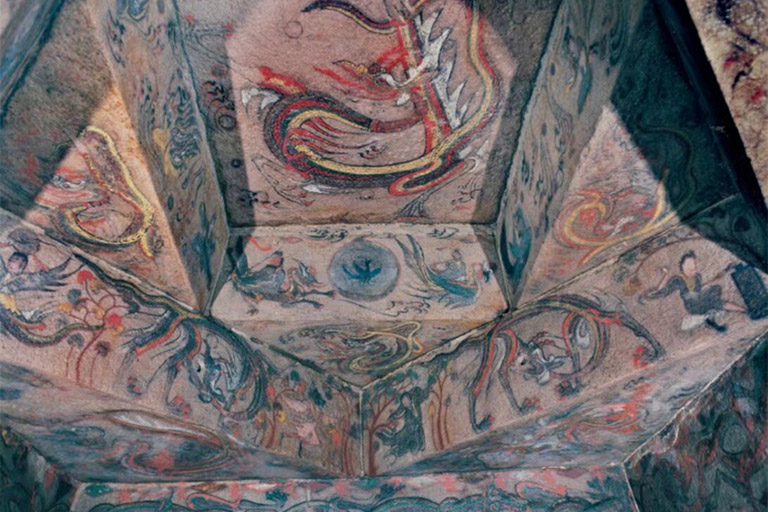
Goguryeo_Capital_Cities_And_Tombs.
Local Cuisine and Accommodation Nearby
Exploring the ancient remnants of the Goguryeo Kingdom is not just a journey through history; it’s also an opportunity to savor the rich flavors of the region and unwind in local accommodations that reflect the essence of this cultural heritage. Here’s what to consider when seeking dining and lodging options near the Capital Cities and Tombs of the Ancient Goguryeo Kingdom.
Culinary Delights
Local Cuisine
As you wander through the archaeological wonders of the Goguryeo Kingdom, indulge in the flavors of the region. Northeast Chinese cuisine is known for its hearty and rustic dishes, often featuring ingredients like wheat, corn, and meats. Here are a few must-try dishes:
- Kimchi: While widely known across Korea, the local variations in Ji’an will give you a taste of the region’s unique spices and preparation methods.
- Noodle Dishes: Try the hand-pulled noodles typical of the area, often served with rich broths or stir-fried with vegetables and meats.
- Jiaozi (Dumplings): A staple in the region, these dumplings can be filled with a variety of ingredients, from pork and cabbage to vegetarian options.
- Roasted Lamb: This dish is particularly popular in the nearby countryside, often marinated with local spices and roasted to perfection.
- Local Brews: Pair your meals with a glass of locally brewed beer or traditional rice wine for a complete dining experience.
Recommended Restaurants
- Old Town Noodle House: Located in the heart of Ji’an, this cozy eatery specializes in handmade noodles. Enjoy a steaming bowl while taking in the local ambiance.
- Goguryeo Royal Banquet: For a more upscale experience, this restaurant offers a menu inspired by historical Goguryeo dishes, allowing you to dine like royalty amidst decor that reflects the ancient kingdom.
- Dumpling Delights: This small, family-run establishment is famous for its flavorful dumplings and friendly service. Be sure to try their signature dish!
Accommodation Options
After a day of exploring the tombs and ancient cities, retreat to one of the local accommodations that provide comfort and a glimpse into the region’s culture.
Charming Stays
- Ji’an Ancient Hotel: This hotel captures the essence of Goguryeo culture with traditional architecture and decor. Enjoy comfortable rooms with modern amenities, alongside stunning views of the surrounding mountains.
- Wandu Mountain Inn: Situated near the Wandu Mountain City, this inn offers a rustic charm with easy access to the archaeological site. The friendly staff provides a warm welcome and can assist with local tours and recommendations.
- Goguryeo Heritage Lodge: Experience the local culture firsthand in this lodge that emphasizes traditional Korean hospitality. Enjoy home-cooked meals and participate in cultural activities organized by the hosts.
Budget-Friendly Options
- Ji’an Backpackers Hostel: Ideal for travelers on a budget, this hostel offers dormitory-style accommodations with a communal kitchen. It’s a great place to meet other travelers and share stories of your adventures.
- Local Guesthouses: Scattered throughout Ji’an, these guesthouses provide simple yet comfortable lodging with the added benefit of immersing you in local life.
Conclusion
Embarking on a journey through the Capital Cities and Tombs of the Ancient Goguryeo Kingdom is as much about the experience of the land as it is about the history it holds. Savor the local cuisine and find restful accommodations that will enhance your exploration of this fascinating UNESCO World Heritage site. Whether you’re enjoying a hearty meal or resting in a traditional lodge, you’re sure to create lasting memories of your time in this remarkable region.
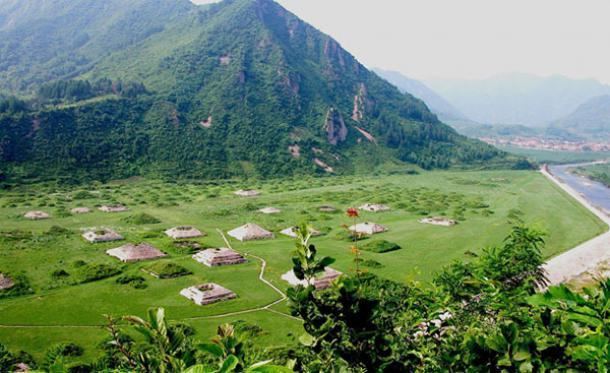
Goguryeo_Capital_Cities_And_Tombs.
Frequently Asked Questions
Frequently Asked Questions
1. What are the Capital Cities and Tombs of the Ancient Koguryo Kingdom?
The Capital Cities and Tombs of the Ancient Koguryo Kingdom are UNESCO World Heritage sites located in northeast China. They consist of archaeological remains of three cities—Wunu Mountain City, Guonei City, and Wandu Mountain City—along with 40 tombs, including 14 imperial tombs and 26 noble tombs, dating back to the Koguryo dynasty, which ruled from 277 BC to 668 AD.
2. How do I get to the Koguryo sites from major cities?
The closest major city is Ji’an, which is well-connected by train and bus services. From Ji’an, you can take local transportation or hire a taxi to reach the various sites. Wunu Mountain City is located in Huanren Manchu Autonomous County, while Guonei and Wandu Mountain Cities are closer to Ji’an.
3. Is there an entrance fee to visit the sites?
Yes, there may be entrance fees for visiting the archaeological sites and museums associated with the Koguryo heritage. It is advisable to check in advance for current fees, as they may vary by season or for special exhibitions.
4. What should I wear when visiting the Koguryo sites?
Wear comfortable clothing and sturdy shoes, as the sites may require walking and some areas could be uneven. If you plan to explore outdoors, consider bringing a hat and sunscreen, especially during the summer months.
5. Are there any guided tours available?
Yes, guided tours are available for the Capital Cities and Tombs, often provided by local tour companies. This can enhance your experience, as guides will share insights into the rich history and significance of the Koguryo Kingdom.
6. What is the best time of year to visit these sites?
The best time to visit is during spring (April to June) and autumn (September to November) when the weather is mild, and you can enjoy beautiful natural scenery. Summer can be hot and humid, while winter may bring snow and cold temperatures.
7. Are there facilities available for tourists at the sites?
Yes, many of the sites have visitor centers equipped with restrooms, information desks, and sometimes small cafes or shops where you can buy refreshments and souvenirs. However, it’s wise to bring your own water and snacks, especially when exploring the more remote areas.
8. Can I take photographs at the Koguryo sites?
Photography is generally allowed at the sites, but be sure to respect any specific rules regarding flash photography or restricted areas. Always check for signs or ask local staff if you are uncertain about any restrictions.
Final Thoughts on Your Trip
As your journey through the ancient realms of the Goguryeo Kingdom comes to a close, reflect on the profound history that resonates within the capital cities and tombs of this remarkable civilization. Each site, from the majestic Wandu Mountain City to the enigmatic Guonei City, offers a captivating glimpse into a world where nature and architecture harmoniously intertwine.
The intricate designs of the tombs, adorned with vibrant wall paintings, reveal the artistic genius of a culture that thrived for centuries, leaving an indelible mark on the fabric of Northeast Asia. Standing amidst these ancient stones and earth mounds, you are not merely an observer; you are a participant in a story that echoes through time, connecting you with the spirit of a people who once ruled these lands.
As you depart, carry with you the whispers of history that linger in the air and the lessons of resilience and creativity that the Koguryo civilization embodies. Whether you are a history enthusiast, an art lover, or simply a curious traveler, the legacy of Goguryeo invites you to explore, discover, and appreciate the richness of cultural heritage. May your travels continue to inspire and ignite your passion for the world’s extraordinary past. Safe travels!